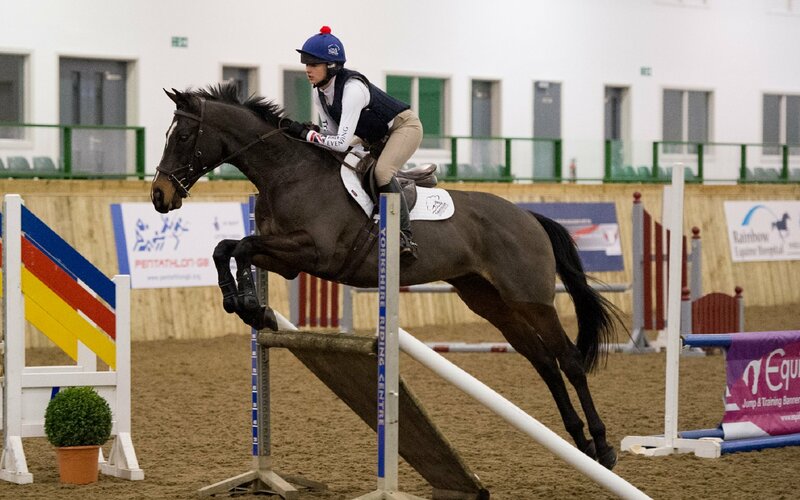
Nine exercises to improve accuracy
Riding with accuracy is important in every phase of eventing. From improving your centre lines and transitions in dressage, and turns and approach in the show jumping, to confidently tackling narrow fences and tricky lines on the cross country course, working on your accuracy can have a big impact on your overall performance. BE Master Coach, Caroline Moore, reveals a few of her favourite exercises to help your accuracy in all phases.
DRESSAGE
This exercise can be used for both dressage and jump training. It is great for any level and requires only basic equipment.
“This is an exercise that involves riding straight then a turn, straight and turn in quick succession. Having the ability to ride a turn without losing the horse’s balance through his shoulders or quarters is the epiphany of all three phases. Without a correct and balanced turn, your centre line will be wobbly, the quality of your jump in the show jumping will deteriorate and run outs will occur at technical cross country fences. This is a wonderful floor plan that covers everything.”
Build a 20m x 20m square with four jump stands or cones with enough room to go around in each corner. Have a pole halfway down each side with the middle of that pole exactly at 10m.
1. Build the exercise up slowly by walking each corner so your horse develops confidence in his balance. Also be conscious of your own position and be careful not to let your body weight slip to the outside.

2. Ride a correct 20m circle by touching the pole on every point.

3. Ride a 10m circle at every centre line in canter. Try riding three strides straight each quarter between each circle.

4. Ride the square in trot with three steps of walk over every centre line. Practise your simple changes over X and this can lead up to flying changes.

5. Ride the square with shoulder-in on each side to coach positioning in and out of the movement.

6. Aim to ride exactly three straight strides in medium canter on each side.

SHOW JUMPING
7. The square exercise can really help in developing the turn to a show jump. It challenges the ability to hold a straight line through a line of fences, such as combinations and doubles, as well as controlling your take-off and landing in the corresponding spot without drifting across the fence. The key to this is all about the turn and approach to the fence.
- This exercise requires eight poles and one or two jumps built at approximately 22m from the square.
- Build a square of poles with channels to go through about 1.5m apart.
- Build the dimensions from outside pole to outside pole at 20m for a younger horse, 18m for an intermediate horse and 16m for an advanced horse.
- Develop the work in trot and canter until the emphasis is on the three correct strides around each turn. For example, the 16m square in canter should be three strides straight then three on the turn then another three straight, etc.
- It should feel like hard work to begin with.
- Once this is developed, build a fence off two of the lines so you can do the exercise on both reins.
- Put the fence at approximately 22m from the corner.
- You can add more fences to your line as you build understanding and confidence in your horse. If you are riding on a good, stable surface with enough room and a balanced horse, you can even set up another square to ride back to.
- This training will develop the rider’s sense for a really good turn and enhance the horse’s balance very quickly.
- It is not easy as it very much dictates your stride pattern, so it is an excellent exercise for the rider who is too ‘stride-focused’.

CROSS COUNTRY
8. You will need all the equipment to make two corner fences, plus four poles to make a tramline on entrance and exit for the first exercise. For the second exercise, when confidence has been established, you will need equipment for two corner jumps and two fences. The distance between the two corner fences should be 10 metres.
- Start by dismantling the front and back rails of corners so you go through the two tramline poles on entrance and exit to maintain straightness with the dismantled corners in the middle.
- When that feels easy, add the back rail of the second corner, which would be jumped on an angle.
- Then you can add the front rail of the first corner, so you are jumping two angled poles, maintaining the straightness throughout.
- The final step is to jump both fences as corners.

9. To increase the level of difficulty, Caroline changes the tramline poles to entrance and exit fences. These can be positioned between 14.6 and 18.2 metres from the double of corners. They can even be placed on a curving line.

First published in Sept/Oct 2020 issue of British Eventing Life, illustrations by Peter Liddiard
